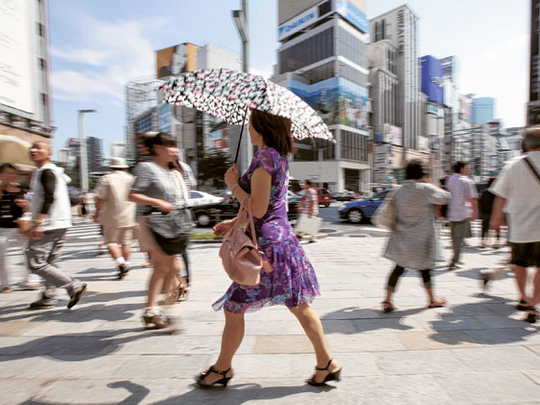
Japan's economic bubble burst 20 years ago. Since then the country has suffered weak growth in what became known as ‘the lost decade.' In recent weeks, a dominant question has been whether the US and European economies are to suffer the same fate.
If anything, the immediate challenges in the West now are worse than they were in Japan when its bubble burst. The West faces little growth and low interest rates for the next few years. But then the West can rebound as, unlike Japan, it is more likely to face up to the need for supply side reforms, aimed at boosting productivity. It would require some monumental policy mistakes for the outcome to be exactly the same as Japan over the next decade. For the West the main message is to avoid deflation and boost demand.
Worse for the West
An ominous lesson for the West is that when bubbles burst economic pain cannot be avoided.
One aspect that may appear worse for the West now is that in Japan it took a while for the full extent of its problems to materialise. Whereas the West had its economic and financial crisis at the same time, Japan's was spread over eight years. The bubble burst at the end of 1989. Yet from 1990 to 1997, employment rose, as firms expected growth to rebound and they were reluctant to lose skilled staff. Then Japan had its financial crisis — in 1998 Yamaichi Securities collapsed, then the biggest corporate failure in history.
Perhaps the West may display a greater sense of urgency. Japan was the world's second largest economy and enjoyed high living standards. That, if anything, lessened the sense of urgency for Japan to take radical action. Japan's lack of political debate didn't help. Socially it could handle slow growth, as income disparities were not huge. Some aspects of this were seen this year in how it handled the aftermath of the tsunami. That social cohesion is in contrast to the US and some parts of Europe now.
Avoid deflation
In the early 1990s I wrote that Japan faced the four immediate D's: debt, deflation, deindustrialisation and deregulation. And that it faced a longer-term challenge, demographics, with its ageing population. Understand these and you will see there are similarities and differences with the West.
Japan's debt problem was different from the West. Japan ran current account surpluses and was able to fund its debt easily, at home. The US or the per-iphery of Europe do not have that luxury, and have had to face up to problems sooner than Japan ever did.
The Japanese were savers when the country's bubble burst. Thus people were able to dip into savings. In contrast, countries in trouble in the West have high personal debt.
Deflation was Japan's biggest problem. Its stock market is still a fraction of its 1989 peak. Land prices peaked in 1991 and took until 2006 to stop falling, and this added to collateral and bad loan problems for Japan's banks. As consumer prices fell, people delayed spending. The West must avoid the deflation trap, particularly given how high debt is.
The West faces a deindustrialisation challenge now, as Japan did then. Japan's industry ‘hollowed out,' moving production to lower cost centres elsewhere, feeding downward pressure on costs and margins at home. The same is happening in the West now. This reinforces the need for growth, to avoid a self-feeding downward spiral, encouraging firms to invest.
The deregulation issue is one big difference. Japan could never come to terms fully with the need for supply-side reform and structural change. Japan was slow to change. Parts of the periphery of Europe show similarities now. Although the West cannot avoid weak demand in coming years there is more reason to think US industry will be able to bounce back, and boost productivity.
Then there is the demographics. This is more of an issue now for Japan than it was 20 years ago. There are some similarities with parts of Europe now, but not with the US, which has a young population.
Policy urgency is key
Japan faced both demand and supply side problems. It focused largely on the demand side, but not well enough, and ignored for a long-term any supply side solutions. In short, it didn't fully address its problems. There lies the challenge for the West.
The West needs to learn the right lessons from Japan. In monetary policy it has, acting more aggressively and over a far shorter time-period than the Bank of Japan.
The fiscal lesson from Japan is more complex. Most worrying for the West now is that just ahead of its financial collapse Japan had embarked upon tough fiscal tightening in 1997. From the bursting of the bubble in December 1989 to 1997 Japan had various fiscal boosts. All worked. But 1997 marked a turning point. Fiscal policy was tightened, consumption tax was hiked, public spending squeezed, the economy suffered and the financial sector imploded. One lesson was that premature fiscal tightening is not good in an economy that needs demand.
Dr Gerard Lyons is chief economist and group head of global research at Standard Chartered Bank












